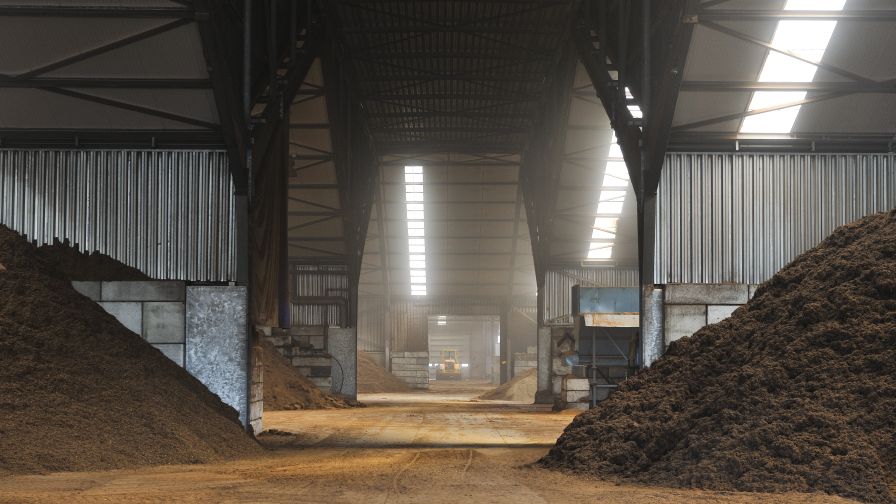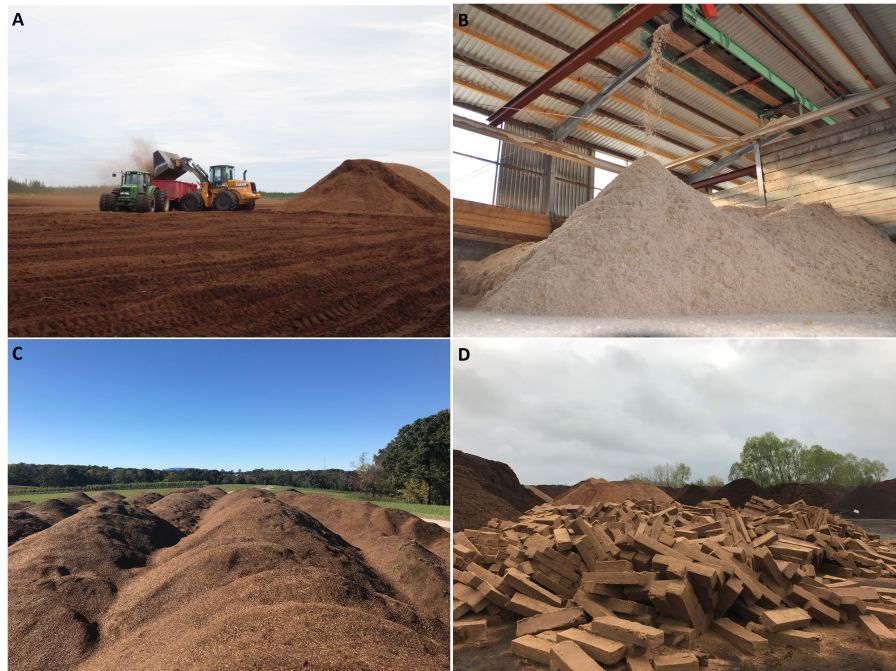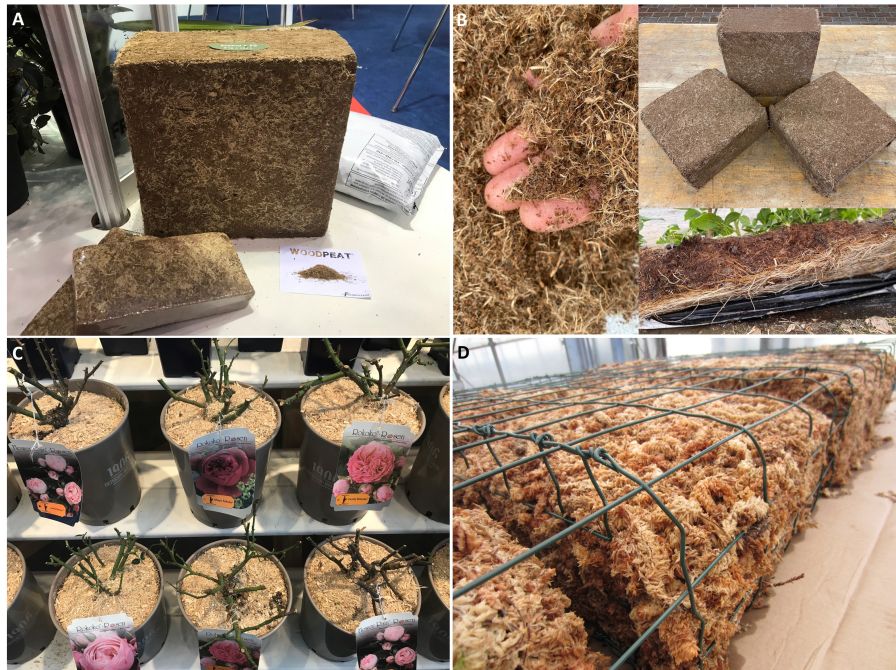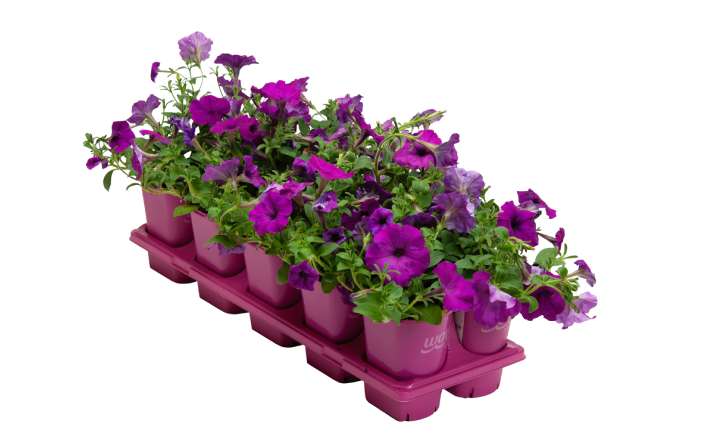Current and Future State of the Growing Media Industry

Warehouses holding substrate components have stayed more empty than full since 2020 due to the unprecedented demand for growing media. Photo: Kekkila-BVB
Never before has the relevance and demand of growing media (soilless substrates) been more significant in the global horticultural world than it is today. Always believed to be an important input in any plant production system, growing media now is viewed by most to be not important, but critical. Essential even.
The changes in horticultural crop production strategies in the past decade coupled with the impact that the past 18 months (i.e. the pandemic) have had on growing practices (and volumes) has culminated in the greatest demand and supply shortages that the growing media industry has ever seen or forecasted. This article will highlight a few of the current and future issues, developments, insights, and trends happening in the industry now and in the year ahead.
In 2020, a group of academic scientists were awarded a small planning grant from the USDA to conduct a North American needs assessment for the future of soilless substrate science. The goal of this assessment was to develop a holistic understanding of grower and supplier needs, with projections of increased growing media use in the future. Much will be written and shared about the findings from this project, but the data generated from it are already being used by scientists to better plan for collaborative research partnerships with academic and industry allies to help address the grand challenges and immense opportunities being faced by the growing media industry today and more so in the future.

Sphagnum peat moss (A), refined wood fiber (B), aged/composted pine bark (C), and coconut coir (D) remain the most used and sought after organic substrate components. Photos: A, C, and D: Brian Jackson. Photo B: Klasmann-Deilmann
Grower Challenges
Many growers experienced extreme shortages, supply disruptions, long delivery times, and increased prices on products this year, not to mention many who were unable to find any substrates at all when they needed them. The primary (organic) substrate materials in highest demand were Sphagnum peat, coconut coir, wood fiber, and pine bark, among others. Other materials were also difficult to source, notably perlite, which was in very high demand.
Other than extreme product demand, the shortages were further exacerbated by domestic and global transport issues (gridlock) and labor sourcing and availability to process and ship the materials. Growers who were most affected by the supply shortages were those who were new to the market, those who were expanding their production capacity to meet public demand for plants, and those who did not have existing customer relationships with substrate suppliers prior to the pandemic. As a result, many growers in both North America and Europe turned to new or non-traditional substrate components and mixes as a means to fill the gap in their production needs.
The expansion of new crop production in soilless growing systems (not in the field) has been one of the biggest factors leading to supply and demand issues. Crops like Christmas tree seedlings, cannabis, raspberry, citrus, blueberry, and strawberry, among others, continue to increase at warp speed around the globe. Growers of these crops are continuing to discover the advantages of growing in soilless substrate systems, and now we are seeing a domino effect, as more production volume of those and other consumable crops transition to soilless growing.

The use of growing media to produce crops like Christmas tree seedlings (A), raspberry (B), citrus (C), blueberry (D), and strawberry (E) have helped drive the supply and demand issues surrounding the availability and cost of substrates. Photos: A, B, C, E: Brian Jackson. Photo D: Dutch Plantin
Supplier Challenges
Substrate manufacturers and suppliers have been on a rollercoaster the past 18 months. With demand at an all-time high and having to deal with the effect of the pandemic in their own businesses, I will take a moment to salute them and their efforts to help their customers, new and old, as best as they could. Several peat suppliers stopped or drastically reduced the amount of raw peat they were selling to be able to stretch their supplies and continue offering more ready-to-use mixes. Many suppliers had to turn away sales or book orders 8-12+ months out.
Aside from past and ongoing product shortages, many substrate companies have continued innovating and investing in research to develop new products that best meet grower demand and to keep up with the evolving changes in plant production systems. Some of the recent developments include compressed peat:wood fiber blocks, a patented coconut coir:wood fiber product, container top-dressing mulches that improve weed and water management, farming of Sphagnum peat to use in new growing systems and formulations, peat free stabilized (bio-based binders) substrates for seed, cuttings, and tissue culture applications, among many others.

Innovations and trends in the growing media industry include peat and wood fiber blocks (A), coconut coir and wood fiber blocks (B), use of container mulches for weed and water control (C), and farming Sphagnum peat for specific uses (D). Photos: A, C, and D: Brian Jackson. Photo B: FibreDust
Research Developments
Researchers, both public and private, are also working hard behind the scenes as well in plain sight to address challenges that our growers (and industry) are facing, as well as putting a lot of thought, effort, planning, and action into large collaborative initiatives to identify and confront the challenges of the future.
One of the global initiatives currently underway is a strategic and unified approach to how researchers characterize and describe the substrate materials they are investigating. Using common terminology and nomenclature of products and methodologies will allow better understanding and transmission of research results across the scientific community. These efforts will allow us to lessen the chance or frequency of reinventing the wheel and will better enable information dissemination not only among scientists but more importantly to substrate manufacturers and growers looking for evidence-based data to guide the future of their production practices.
The growing media industry has always risen to address past challenges in the market/industry, and this time is no different. It is true that the challenges that the industry faces today are unprecedented, but so are the opportunities. Demand will continue to remain exceptionally high through 2022 and the supply chain will continue to be stretched thin as the world continues to rebound from the pandemic in the year ahead. Similar to many other industry supply chains, consumers (growers) should place product orders as early as humanly possible, be understanding when wait times are long and product availability is low, be open to trialing new growing media products and formulations, and, last but never least, do not let price solely drive decisions.
Building and maintaining close and long-lasting relationships (even during occasional price increases) with specific growing media suppliers, is a proven way to lessen the chance of not getting product when you need it and increase the chances of being well taken care of (technical support, response time, price forecasting, etc.) as best as possible by the supplier, even in lean times. The pandemic nightmare has proven this business tactic as a wise one. Consider it substrate security.
Reference: J.S. Fields, J. Owen, A. Lamm, J.E. Altland, B.E. Jackson, Y. Zheng, L. Oki, K. Fontenot, J. Samtani, and B. Campbell. 2021. Soilless substrate science: a North American needs assessment to steer soilless substrate research into the future. Acta Hortic. 1317:313-318.









